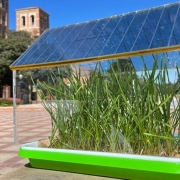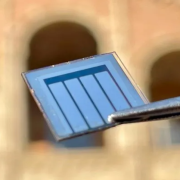As countries around the globe seek sustainable energy sources and the U.S. endeavors to become a net-zero emissions economy by 2050, renewable energy sources such as solar panels are in high demand.
However, solar panels can take up significant space and are often difficult to scale. Enter the new field of agrivoltaics, which focuses on the simultaneous use of land for both solar power generation and agriculture. For example, replacing the glass in greenhouses with solar panels could power the lamps and water controls in the greenhouse, or even the whole farm. But how does one build solar panels that can absorb energy from sunlight without blocking the light that plants need?
UCLA Samueli School of Engineering’s materials scientist Yang Yang and his team have designed just such a device. In a study published today in Nature Sustainability, they explore a new, viable application of solar cells that does not require large plots of land.
Click here to read the full article
Source: UCLA Samueli
—
If you have any questions or thoughts about the topic, feel free to contact us here or leave a comment below.


